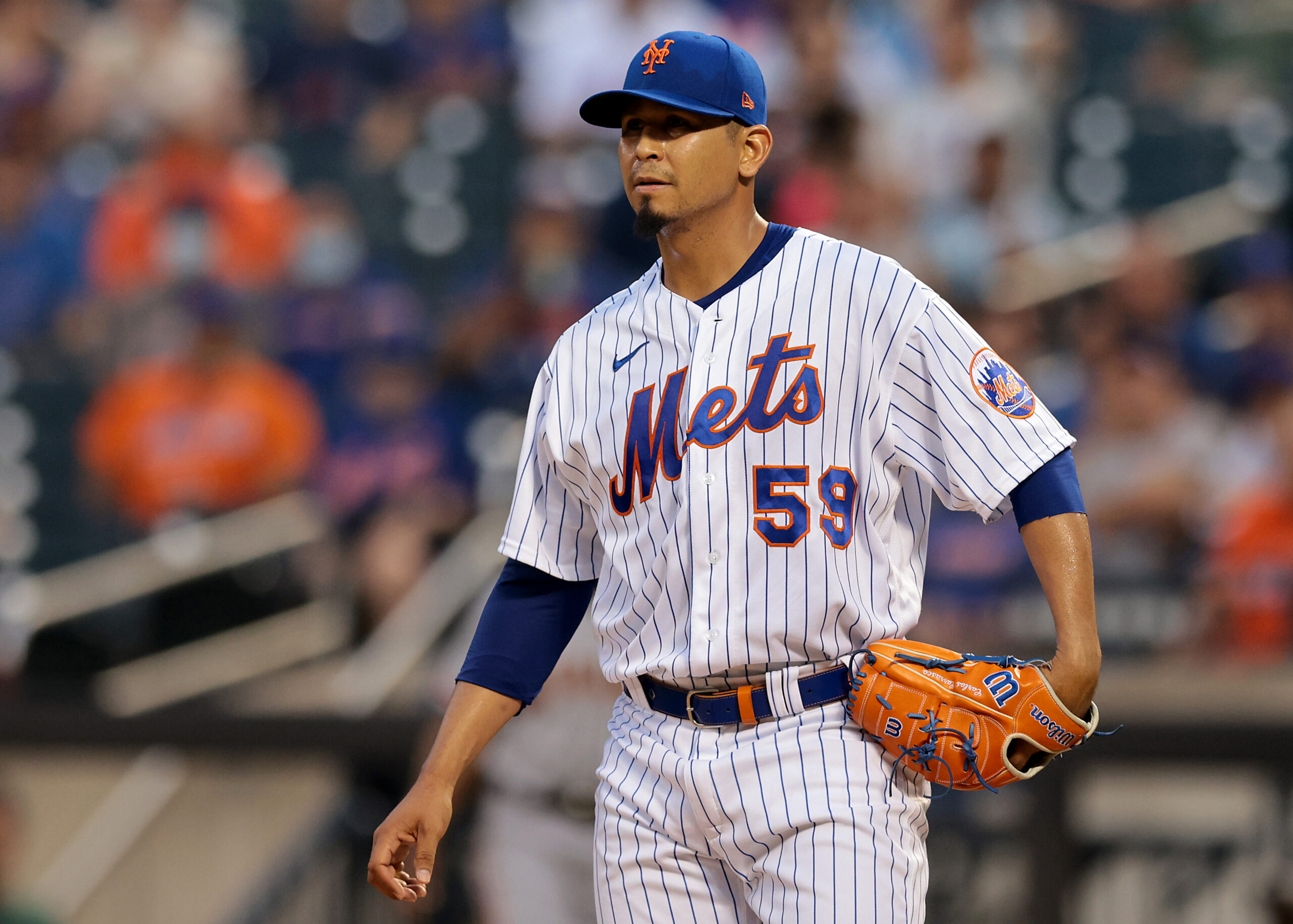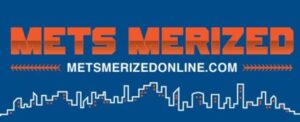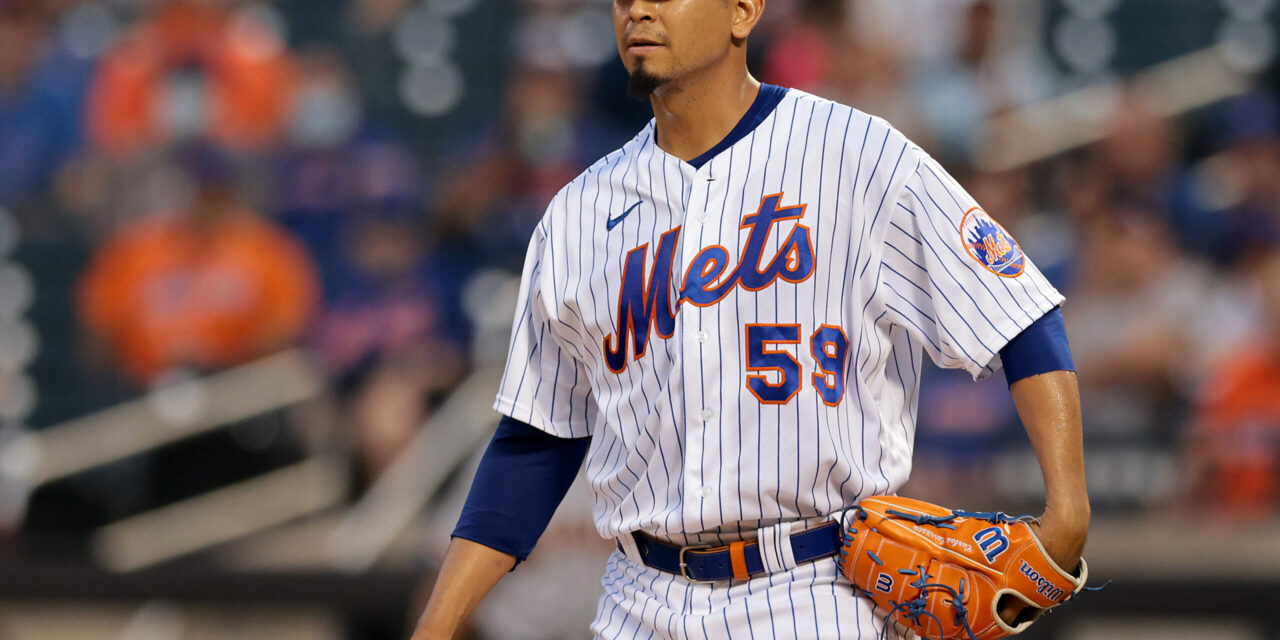
Credit: Vincent Carchietta-USA TODAY Sports
Following a lengthy stint on the injured list, starter Carlos Carrasco returned from his hamstring injury near the end of July and has remained focused on making up for lost time over the final two months of the 2021 season, although that’s proven to be easier said than done.
Without Jacob deGrom, who’s been sidelined since early July due to a sprained UCL, the New York Mets were counting on Carrasco to help strengthen the starting rotation through the rest of the way. Though this team hasn’t needed to worry about the 34-year-old’s health status, his overall results, on the other hand, have been a completely different story.
Despite compiling 38 2/3 innings over his nine starts, the 6’4″ hurler hasn’t fared overly well since returning to the majors, as he’s posted a troubling 5.59 ERA, 4.14 xERA and a 4.38 FIP during that span. Making matters worse, keeping balls in the yard has transformed into one of his biggest weaknesses, which has seen him allow seven home runs – including three in a single game back on Aug. 15.
Interestingly enough, most of Carrasco’s disappointing results have occurred during the first inning, allowing opposing offenses to score early out of the gate. But once the second inning begins, his performance improves significantly through the remainder of his outing, resulting in dramatically more success later on.

Digging deeper into Carrasco’s first-inning woes, his batted-ball metrics have also been impacted after recording the first three outs of each game, which have undoubtedly played a key role in his inability to prevent home runs.
In the first inning this season, the right-hander has recorded a 21.6% LD rate, 32.4% GB rate, 45.9% FB rate, 35.3% HR/FB ratio and a 44.7% hard-hit rate against.
From the second inning onward, the veteran starter has produced a 22.0% LD rate, 48.8% GB rate, 29.3% FB rate, 4.2% HR/FB ratio and a 36.6% hard-hit rate against.
What’s even more eye-opening is that Carrasco has enjoyed much more success with his mid-90s fastball and high-80s slider – two of his primary pitches – beyond the first inning. Similar to his overall results, he’s experienced a major increase in strikeouts and also hasn’t surrendered anywhere near as much damage against either of these two offerings once returning to the mound for a second time.
Failing to perform effectively with his four-seamer early on, the former international free agent has allowed a trio of home runs, .615 AVG, .441 xAVG, 1.462 SLG, .900 xSLG, .789 wOBA, .538 xwOBA, .846 ISO and a 98.7 mph average exit velocity in the first inning, according to BaseballSavant.com. In addition, his heater has also created a measly 6.7% strikeout rate.
But through the rest of his outings, the Mets’ front-line starter hasn’t given up a single home run, generating a .200 AVG, .201 xAVG, .267 SLG, .292 xSLG, .250 wOBA, .276 xwOBA, .067 ISO, 20.0% strikeout rate and a 91.6 mph average exit velocity against his primary fastball.

Credit: Robert Hanashiro-USA TODAY Sports
As for Carrasco’s slider, opposing batters haven’t endured any issues hitting for contact or power against it in the first inning, as his breaking ball has allowed a pair of home runs, .400 AVG, .372 xAVG, 1.100 SLG, .804 xSLG, .621 wOBA, .513 xwOBA, .700 ISO and a 93.0 mph average exit velocity. Additionally, it’s also registered a 9.1% strikeout rate.
Thanks to his impressive composure, he’s been able to rebound from these struggles in the ensuing innings, resulting in zero home runs allowed, a .200 AVG, a .265 xAVG, a .267 SLG, a .383 xSLG, a .216 wOBA, a .295 xwOBA, a .067 ISO, a 41.9% strikeout rate and an 88.4 mph average exit velocity against.
Along with witnessing improved performances from his four-seamer and slider, Carrasco’s usage of his low-80s curveball also changes as the game moves along. Despite throwing just a pair of benders in the first inning this season, he’s thrown 31 of them from the second inning onward, making his repertoire dramatically more effective.
Taking all these factors into account, it’s becoming clear the native of Venezuela could benefit from being paired with an opener, preserving him for the second or third inning. While utilizing this strategy is fairly uncommon when it comes to front-line starters, given just two weeks are remaining in the regular season, it couldn’t hurt to test it out.
Since Carrasco likely possesses just two or three more starts in 2021, unless the Mets somehow surge into a playoff spot, which seems unlikely at this point, there shouldn’t be much risk involved in playing out this scenario through the rest of the regular season.
If it’s successful, then the front office and coaching staff could consider carrying it over into next season. But if things don’t work out, the entire opener idea could be scrapped in the offseason, providing the veteran righty a fresh start in 2022.
As for which pitchers could serve as openers, reliever Seth Lugo would seem to be the most obvious choice, especially since he was thrown into a starter’s role out of necessity last season and is capable of throwing multiple innings. Considering his arsenal is headlined by a mid-90s fastball, high-7os curveball and a mid-90s sinker, chances are he could frustrate plenty of hitters in this role.
Another potential candidate could be Trevor Williams, who’s split time as both a starter and a reliever since coming over to the Mets in a mid-season trade. Based on the 1.40 ERA, 2.81 FIP and 0.5 fWAR rating he’s recorded over his 19 1/3 innings in blue pinstripes, he could also prove to be a very effective weapon early in games.
Obviously, this likely isn’t the outcome management had envisioned when they acquired Carrasco, along with shortstop Francisco Lindor, last winter. Having said that, with the aging hurler signed through 2022, and potentially 2023 if he qualifies for his $14 million vesting option, his tenure in New York is certainly far from complete.
So if positioning an opener in front of Carrasco can allow him to return to the same pitcher that earned a combined 10.6 fWAR rating from 2017-18, then that’s the route the Mets should take moving forward, at least for now.
















